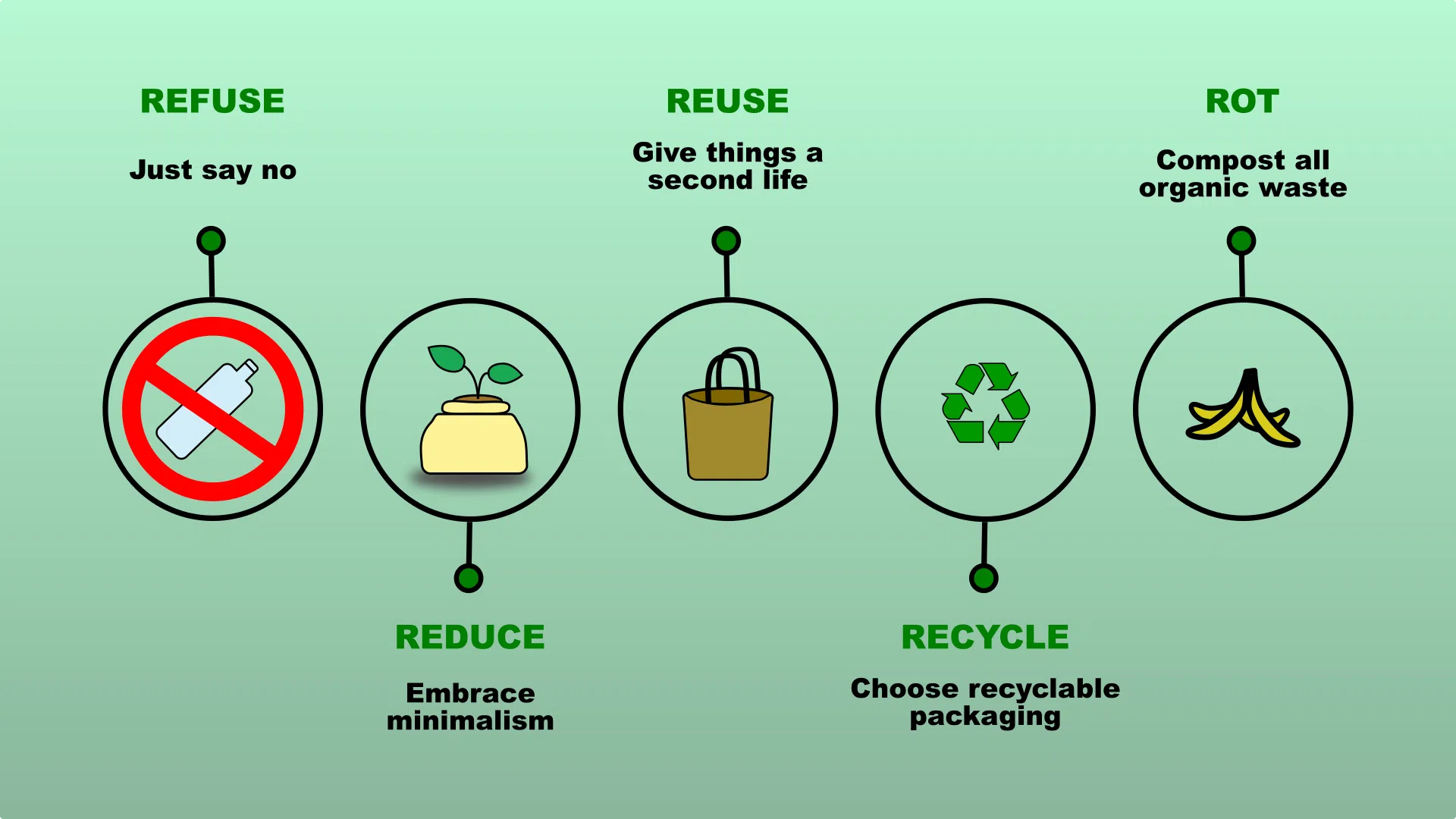I’m using Low-Waste throughout this article, rather than Zero-Waste. Getting to absolute zero is almost impossible, but everyone can reduce their waste in some way.
In a world where sustainability is becoming increasingly urgent, adopting a low-waste lifestyle can be a powerful way to reduce your environmental impact. By aiming to minimise the waste we send to landfills, low-waste living helps conserve resources, reduce pollution, and foster a more sustainable way of life. But like any lifestyle change, starting can seem daunting. This guide will help you ease into a low-waste lifestyle by breaking it down into manageable steps, perfect for beginners.
What is Low-Waste?
Low-waste is a philosophy and lifestyle choice that promotes the conservation of all resources by ensuring that nothing goes to waste. This means rethinking your consumption habits to reduce, reuse, recycle, and compost as much as possible, so that less waste ends up in landfills or oceans. It’s important to note that achieving a completely low-waste lifestyle is challenging and not the ultimate goal for most beginners. Rather, it’s about making conscious choices to gradually reduce your waste and improve over time.
Step 1: Evaluate Your Current Waste Habits
Before making changes, take a week or two to observe your current habits. Track the types and amounts of waste you produce. Keep a record of what you throw away daily, including food scraps, packaging, and disposable items. Understanding your waste patterns will help you identify areas for improvement and where you can make the biggest impact.
Key Areas to Focus On:
- Plastic packaging: Food wrappers, water bottles, and take-out containers.
- Single-use items: Coffee cups, straws, napkins, and utensils.
- Food waste: Uneaten leftovers or expired products.
- Household products: Cleaning supplies, paper towels, and personal care items.
Step 2: The 5 Rs of Low-Waste Living
Low-waste living follows a simple mantra: Refuse, Reduce, Reuse, Recycle, and Rot. Let’s dive into each one and explore how they can guide your lifestyle transformation.
- Refuse: The first step is to refuse items you don’t need. Say no to unnecessary freebies, junk mail, plastic bags, and single-use items. By refusing non-essential products, you can prevent waste before it enters your life. A great example is bringing your own bags when shopping or politely declining plastic straws when dining out.
- Reduce: Minimize your consumption. Evaluate your current lifestyle and identify areas where you can cut back. Ask yourself: Do I really need this? Reducing your consumption helps prevent waste while saving money and simplifying your life. For example, you can buy in bulk to reduce packaging or choose items with minimal or compostable wrapping.
- Reuse: Reuse items as much as possible before throwing them away. This could mean upcycling old clothes, repurposing glass jars for storage, or using cloth towels instead of paper ones. Invest in reusable alternatives for common single-use items, like metal water bottles, cloth shopping bags, beeswax wraps, and stainless-steel straws.
- Recycle: While recycling is an essential part of low-waste, it shouldn’t be your first option. Only recycle items that can’t be refused, reduced, or reused. Also, ensure you’re recycling correctly—clean, dry, and sort materials based on your local recycling guidelines. Recycling effectively reduces waste and supports a circular economy.
- Rot (Compost): Organic waste like food scraps and yard trimmings can be composted instead of tossed in the trash. Composting turns these materials into nutrient-rich soil, reducing the volume of waste sent to landfills. Start small by composting kitchen scraps in a home compost bin or join a community composting program if available in your area.
Step 3: Start Small—One Step at a Time
It’s easy to feel overwhelmed when starting your low-waste journey. Instead of trying to change everything at once, focus on small, incremental steps that fit your lifestyle. For example:
- Switch to a reusable water bottle: This simple habit can prevent countless plastic bottles from being wasted.
- Use cloth bags for shopping: A reusable tote bag can replace plastic grocery bags, which are a major source of litter.
- Try a reusable coffee cup: Many cafés offer discounts for bringing your own cup, and it saves disposable ones from ending up in the trash.
- Invest in a reusable straw: Stainless steel or silicone straws are great alternatives to single-use plastic straws.
As you adjust to each new habit, you can introduce another. Over time, these small changes will accumulate into significant waste reduction.
Step 4: Low-Waste at Home
The home is a great place to start practising low-waste living. By making some simple swaps, you can dramatically cut down on your household waste:
- Kitchen: Opt for reusable containers, beeswax wraps instead of plastic wrap, and cloth napkins. Compost your food scraps and buy in bulk where possible.
- Bathroom: Switch to package-free soap and shampoo bars, bamboo toothbrushes, and reusable razors. Choose biodegradable or refillable packaging for personal care products.
- Cleaning: Use homemade, natural cleaning products like vinegar and baking soda. Switch to reusable cleaning cloths and avoid disposable wipes or paper towels.
Step 5: Be Mindful of Your Purchases
As you embark on your low-waste journey, make mindful choices about what you buy. Opt for high-quality, long-lasting items over cheap, disposable ones. Avoid products with excessive packaging or those made from non-recyclable materials. When possible, choose second-hand goods, which help extend the life cycle of existing items and reduce the demand for new resources.
Step 6: Embrace the Imperfection
It’s important to recognise that low-waste living is a process, not a destination. You don’t need to be perfect, and there will be times when waste is unavoidable. Celebrate the small victories and learn from setbacks without being too hard on yourself. The goal is progress, not perfection.
Step 7: Get Involved and Build a Community
The journey to low-waste is easier and more enjoyable when you’re surrounded by like-minded people. Join online low-waste communities or local sustainability groups where you can share tips, resources, and inspiration. Engaging with others will keep you motivated and accountable as you navigate the challenges of waste reduction.
Conclusion: A Journey Worth Taking
Living a low-waste lifestyle is a powerful way to minimise your environmental impact and contribute to a more sustainable future. While it may seem daunting at first, starting with small steps and gradually building on them can lead to meaningful change. By embracing the principles of refuse, reduce, reuse, recycle, and compost, you’ll discover that living with less waste isn’t just good for the planet—it’s good for your well-being too.


